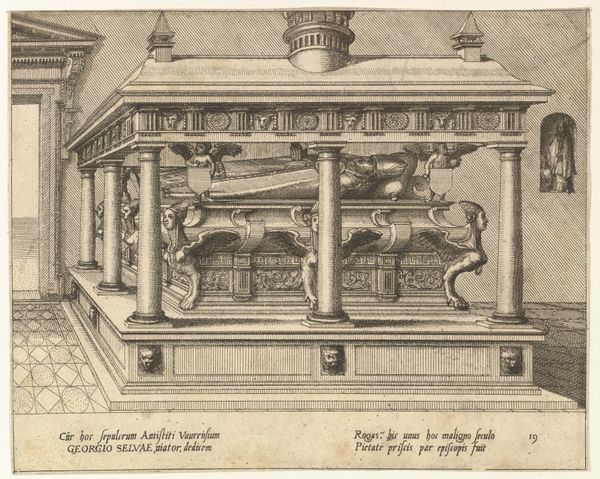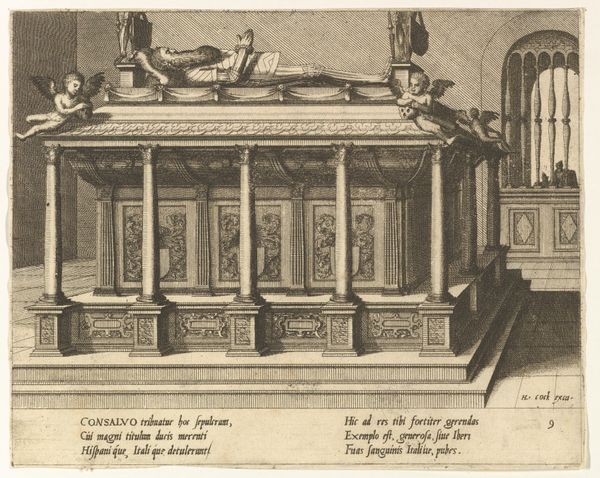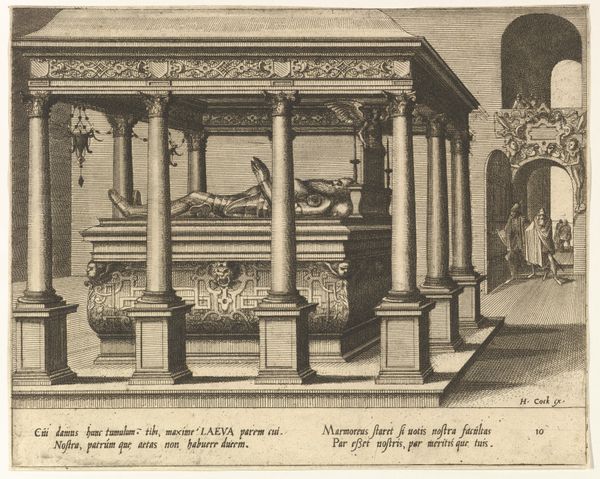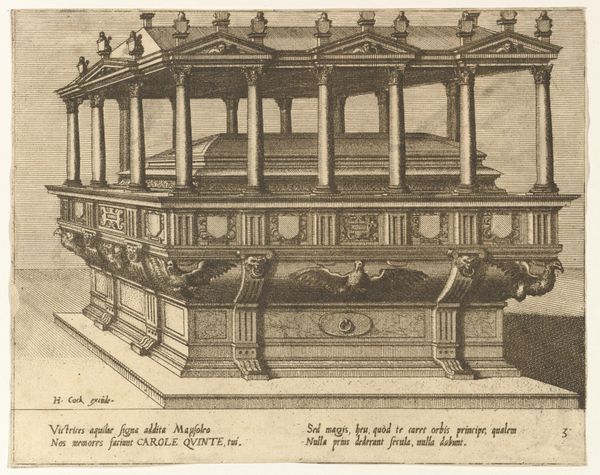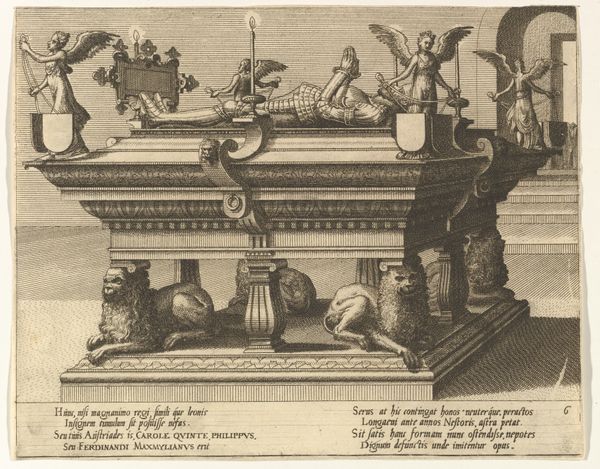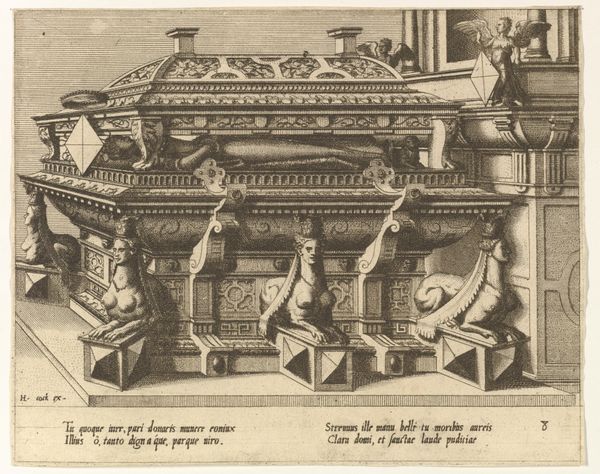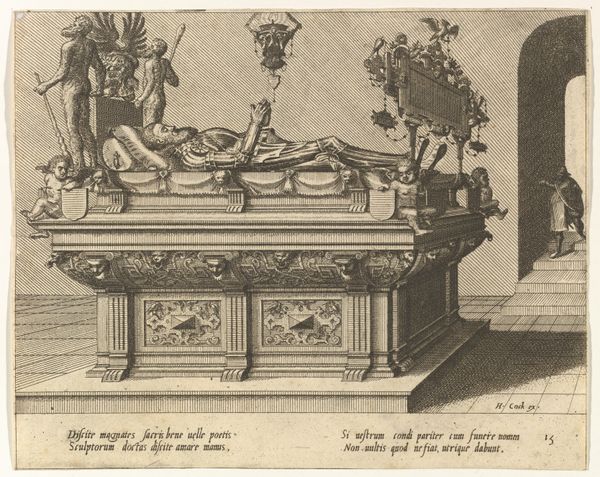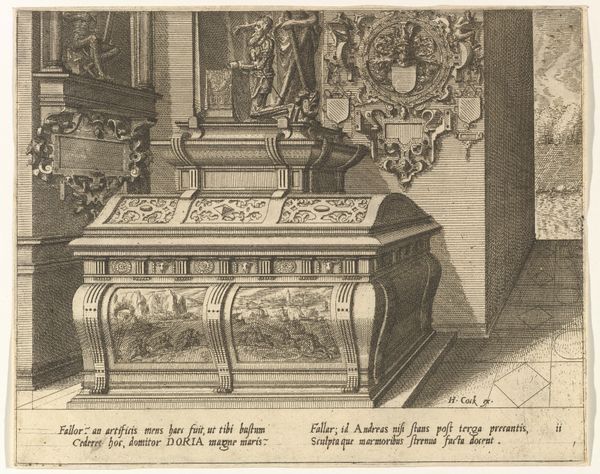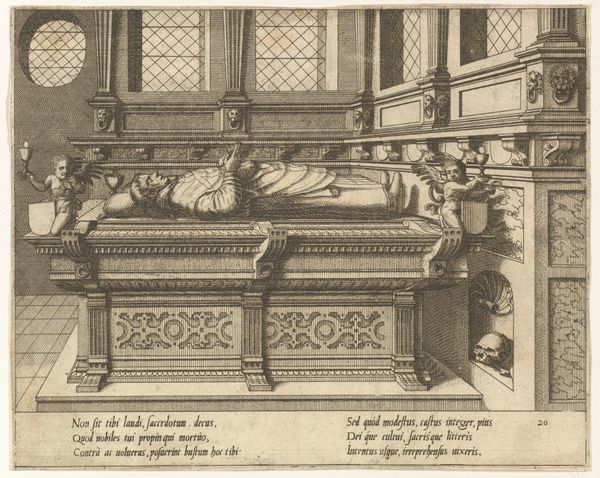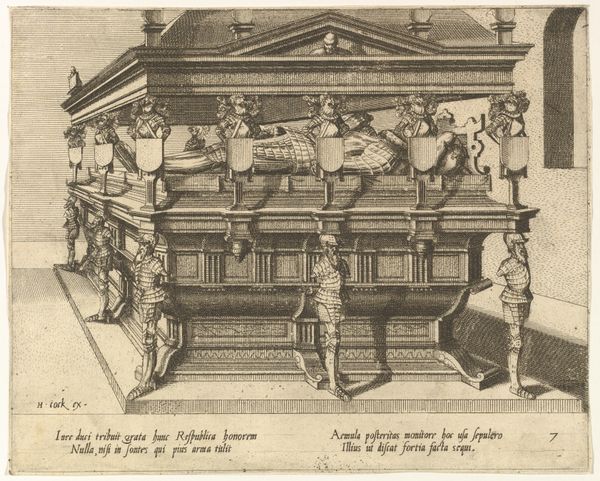
drawing, print, engraving, architecture
#
drawing
# print
#
mannerism
#
geometric
#
history-painting
#
engraving
#
architecture
Dimensions: sheet: 6 9/16 x 8 1/4 in. (16.6 x 20.9 cm)
Copyright: Public Domain
Curator: This intriguing print, dating back to 1563, is titled Cœnotaphiorum (18) and attributed to Hans Vredeman de Vries. Preserved at the Metropolitan Museum of Art, it's an engraving showcasing the artist's interest in architecture. What are your first impressions? Editor: Bleak grandeur! It looks like some sort of morbid stage set, all fussy detail for a drama only bones can truly appreciate. So many layers and ornate flourishes for...nothingness. It’s shouting into the void. Curator: Indeed. Note the meticulous detail, reflective of Mannerist sensibilities, evident in the symmetrical arrangement of architectural elements. De Vries, a master of perspective, renders the coenotaph—an empty tomb—with remarkable precision. Editor: An empty tomb, yes. The corpse looks like he's just napping in there to me, even with all the impressive geometric panelling. Still, what kind of statement is being made here by emphasizing what isn’t? Was de Vries exploring mortality or legacy, or maybe mocking both? Curator: It engages with both. The inscription at the print’s lower edge, written in Latin, provides context. "To him, the master of all arts," suggests a commemoration of excellence, albeit within the context of death’s finality. Also note the classical elements are mediated by the modern style of Mannerism and the Northern Renaissance, making for an intricate design of the non-existent thing! Editor: Legacy...that's what stands out for me. How odd that someone's achievements are carved in stone – the ultimate achievement itself! Maybe de Vries saw the art world heading this way even back then - endless art about art about art... Curator: The use of engraving enables dissemination, furthering his artistic influence to later artist through a more available means than any oil paintings. Editor: You’re probably right to have mentioned accessibility of the artwork. For all its grim presentation, I almost think its intended audience must have had more laughs looking at this then tears shed! It's darkly amusing in its construction. Curator: Yes, humor isn’t out of the question. It provides a stark meditation on history, accomplishment, and mortality, pushing at the boundaries of traditional history painting and creating complex conversation. Editor: So, in a way, that long-dead person is still performing—forever on that morbid stage set. I guess de Vries gave his silent actor one last role to play after all.
Comments
No comments
Be the first to comment and join the conversation on the ultimate creative platform.
